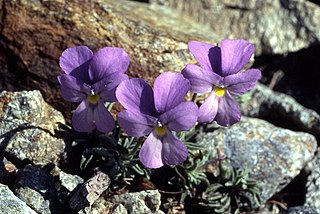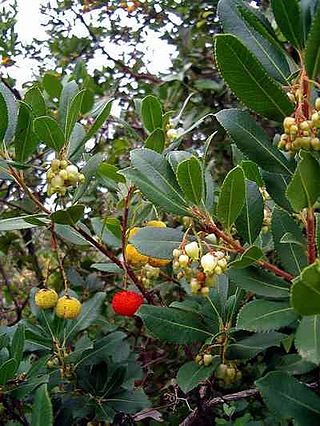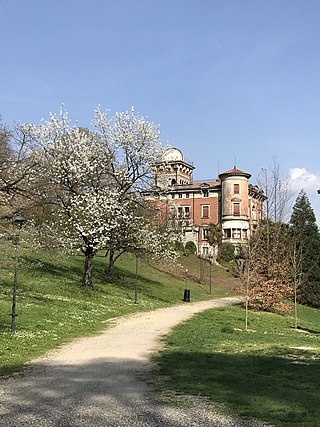
The Giardino Bellini (also known as Villa Bellini; English translation: "Bellini Garden") is the oldest [1] urban park of Catania.

The Giardino Bellini (also known as Villa Bellini; English translation: "Bellini Garden") is the oldest [1] urban park of Catania.

Before the construction of a public garden, the area was occupied by the garden maze or labyrinth owned by the Ignazio Paternò Castello, prince of Biscari. [3] [4] In 1854, the Comune di Catania bought the area of the maze, and in 1864 started to adapt the area into a public garden. [3] Starting from 1875, the municipality acquired several further areas surrounding the maze, and two years later the work to unify these areas was undertaken. [3]
A guide from 1867 reports the gardens housed swan and geese, deer and cows, an aviary, and an enclosure of monkeys. The park has a white marble bust depicting Vincenzo Bellini and completed by Tito Angiolini. [5]
The Giardino Bellini was finally inaugurated in 1883. [3]

Catania is the second largest municipality in Sicily, after Palermo, both by area and by population. Despite its reputation as the second city of the island, Catania is the largest Sicilian conurbation, among the largest in Italy, as evidenced also by the presence of important road and rail transport infrastructures as well as by the main airport in Sicily, fifth in Italy. It is located on Sicily's east coast, at the base of the active volcano, Mount Etna, and it faces the Ionian Sea. It is the capital of the 58-municipality region known as the Metropolitan City of Catania, which is the seventh-largest metropolitan city in Italy. The population of the city proper is 311,584, while the population of the Metropolitan City of Catania is 1,107,702.

Giuseppe Felice Romani was an Italian poet and scholar of literature and mythology who wrote many librettos for the opera composers Donizetti and Bellini. Romani was considered the finest Italian librettist between Metastasio and Boito.

Luigi Capuana was an Italian author and journalist and one of the most important members of the verist movement. He was a contemporary of Giovanni Verga, both having been born in the province of Catania within a year of each other. He was also one of the first Italian authors influenced by the works of Émile Zola, French author and creator of naturalism. Capuana also wrote poetry in Sicilian, of which an example appears below.

Graziella Concas is an Italian pianist and composer.

The Italian Catholic diocese of Caltagirone is situated in the east of Sicily. It is a suffragan of the archdiocese of Catania. Since 20 March 2012 the bishop is Calogero Peri.

The Giardino Botanico "Nuova Gussonea" is a botanical garden located at an altitude of 1700 m on the southern side of Mount Etna, in area B of the Etna Natural Park, Ragalna, Province of Catania, Sicily, Italy. It has a surface of about 10 hectares.

Salvatore Fisichella is an Italian operatic tenor known for his roles in bel canto operas, especially those of Rossini, Donizetti and Bellini. He has been recognized for the ease and vocal brilliance of his singing, and for having sung more of the leading roles in Bellini's operas than any other 20th century tenor.

The flora of Italy is all the plant life present in the territory of the Italian Republic. The flora of Italy was traditionally estimated to comprise about 5,500 vascular plant species. However, as of 2019, 7,672 species are recorded in the second edition of the flora of Italy and in its digital archives Digital flora of Italy. In particular, 7,031 are autochthonous and 641 are non native species widely naturalized since more than three decades. Additionally, further 468 exotic species have been recorded as adventitious or naturalized in more recent times.
Giardino is Italian for garden. It may refer to:
Marco Betta is an Italian composer.

Lino Capolicchio was an Italian actor, screenwriter, and director. He won a special David di Donatello acting award for his role in Vittorio de Sica's 1970 film, The Garden of the Finzi-Contini.
Laura Giordano is an Italian lyric soprano.
Antonio Perazzi is an Italian garden designer, landscape architect, botanist, writer and journalist. He is an expert in naturalistic and ecological garden.

Fisichella is an Italian noble family, forming part of the Sicilian nobility. Members of the family include multiple judges and prelates, among them a justice of the Supreme Court of the Kingdom of Sicily and an archbishop of the Roman Catholic Church.

Ovidio Guaita is journalist, photographer and traveller. He has published over 30 books, in New York City, Rome, Paris. He works with the Faculty of Architecture of the University of Florence on research on the history of art and architecture. Since 2005 he is the Editor in Chief of Resorts Magazine, published in London by Palidano Press.
The following is a timeline of the history of the city of Catania in the Sicily region of Italy.

Villa Toeplitz is a historic villa located in Varese, Lombardy, Italy. Construction was complete by 1901 and subsequently named after the banker Jósef Leopold Toeplitz, who bought the villa in 1914. It previously belonged to the Hannesens, a German family that used it as a country holiday house.

The Giardino Pacini, also known as Villa Pacini or the Villa Varagghi, is a small circular urban park located just south of the Porta Uzeda, on the seaward side of the elevated railway viaduct, in Catania, region of Sicily, Italy. It is partially encircled by Via Lavandaie and Via Jonica.